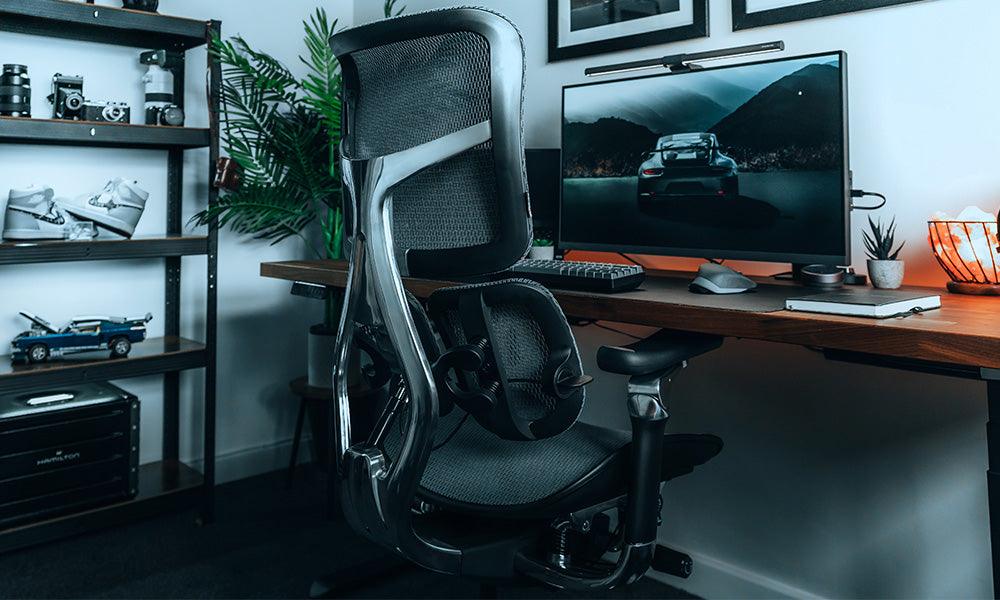Spending long hours at a desk can wreak havoc on your body. Back pain, neck strain, and a general feeling of discomfort are all too common for those who work in office environments. The good news is that ergonomic chairs, like the Sihoo Doro S300, can significantly improve your posture and comfort throughout the workday. But to reap the full benefits of this chair, it's crucial to adjust it properly for your individual needs. This guide will walk you through the process of fine-tuning your Sihoo Doro S300, ensuring a perfect posture and a pain-free workday.
Understanding Ideal Posture
Before diving into adjustments, let's establish the goal: achieving a neutral posture. This means your spine maintains its natural S-curve, with minimal strain on your muscles and joints. Here are the key aspects of ideal posture while seated:
Spine: Maintain a natural, slight arch in your lower back. Avoid slouching or hunching forward.
Head: Your head should be balanced on your spine, with your chin slightly tucked in.
Neck: Your neck should be relaxed, with your ears aligned with your shoulders.
Shoulders: Keep your shoulders relaxed and down, avoiding any tension.
Elbows: Aim for a 90-degree bend at your elbows, with your forearms parallel to the ground.
Hips and Knees: Your hips should be slightly higher than your knees, creating a gentle slope from your thighs to your calves.
Feet: Rest your feet flat on the floor, with your knees bent at a right angle.
Adjusting the Sihoo Doro S300 for You
Now that we understand the ideal posture, let's explore how to adjust the various features of the Sihoo Doro S300 to achieve it:
1. Seat Height:
Sit in the chair with your back straight.
Ideally, your feet should rest flat on the floor, with your knees bent at a 90-degree angle.
If your feet don't reach the floor, use the seat height adjustment lever located on the right side of the chair to raise the seat.
Conversely, if your knees are above your hips, lower the seat until the desired angle is achieved.
2. Seat Depth:
The seat pan should support at least two-thirds of your thighs.
Slide the seat forward or backward using the lever located under the front of the seat.
Ideally, there should be a small gap between the back of your knees and the seat edge to avoid pressure buildup.
3. Lumbar Support:
The Sihoo Doro S300 features an adjustable lumbar support.
Locate the knob on the back of the chair, behind the lumbar pad.
Turning the knob inwards increases the curvature of the lumbar support, providing more lower back support.
Adjust it until you feel a gentle pressure against your lower back, encouraging proper spinal alignment.
4. Armrests:
The armrests on the Sihoo Doro S300 can be adjusted in height and angle.
Locate the buttons on the outer sides of the armrests.
Press and hold the button to adjust the height, ensuring your elbows rest comfortably at a 90-degree angle while typing or using your mouse.
The armrests can also be swiveled inwards or outwards to find the most comfortable position for your shoulders.
5. Backrest Tilt:
The Sihoo Doro S300 offers a reclining backrest.
The tilt tension knob, located under the seat on the right side, controls the amount of resistance you feel when tilting backward.
Turning the knob clockwise increases the resistance, while turning it counterclockwise reduces it.
The tilt lock lever, located next to the tilt tension knob, allows you to lock the backrest in an upright position or unlock it for a slight recline.
Additional Tips for Optimal Comfort
Take breaks: Get up and move around at least every 30 minutes to promote circulation and prevent muscle stiffness.
Stretch regularly: Incorporate simple stretches into your workday to relieve tension and improve flexibility.
Use a footrest: If your feet don't comfortably reach the floor, use a footrest to maintain proper posture and leg support.
Choose the right chair: If the Sihoo Doro S300 doesn't fit your body type or preferences, consider trying other ergonomic chairs to find the best fit for you.
Conclusion
By following these guidelines and adjusting the Sihoo Doro S300 to your individual needs, you can achieve a comfortable and supportive seating experience that promotes good posture and reduces the risk of work-related pain. Remember, proper posture is not just about comfort; it's also essential for long-term health and well-being. Invest in your well-being by making ergonomic adjustments a priority in your workspace.



































